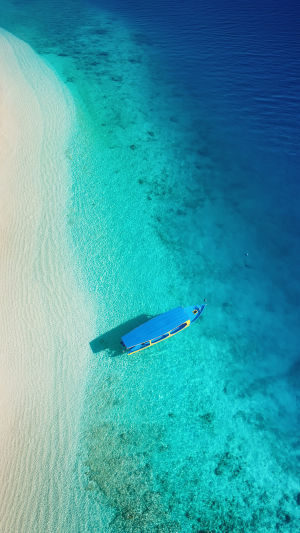On the occasion of the opening of the second phase of the fifteenth meeting of the Conference of the Parties to the United Nations Convention on Biological Diversity (COP15) on the 7th, UNESCO stated that it is speeding up the mapping of marine species in some special sea areas.
Unesco revealed that native species are being documented in 25 of the most unique marine protected areas. Based on this, construct a global marine biodiversity map. Analysis of these samples will shed light on how biodiversity hotspots are being shifted by climate change and where future conservation efforts should focus.
According to reports, marine protected areas around the world play a significant role in helping to protect important species. But as sea temperatures rise, more and more species are being forced to flee their native habitats in search of cooler waters.
In the long term, existing protected areas may deviate from the species' actual habitat, so regular assessments are required.
UNESCO Director-General Azoulay said we need to gather more evidence and share this knowledge more quickly and widely.
This has never been more important in the face of the existential crisis posed to humanity by climate change. To address these challenges, UNESCO is mobilizing a broad network of partners associated with the natural marine protected areas it has established.
Current monitoring uses state-of-the-art technology - environmental DNA (eDNA). Environmental DNA sampling only needs to analyze a few liters of water to identify the various species living in the corresponding area. Not only is this tool cost-effective, but it also detects changes early on without harming native organisms.
Through partnerships with local schools, UNESCO's strategy brings together science and education. Hundreds of students are being trained. They will collect ocean data hands-on and participate in environmental DNA monitoring.
Once the samples are collected, the scientists analyze them in the laboratory according to standard methods established by UNESCO. The development of the methodology was guided by a senior expert advisory committee.
As part of UNESCO's commitment to open science, all results from the program will be made publicly available through the Ocean Biodiversity Information System (OBIS). UNESCO has selected 25 World Ocean Heritage Sites as initial pilots.
How to protect biodiversity:
Learn about biodiversity: Learn all you can about biodiversity and food issues. Know where your food comes from, including how it's grown and raised around the world. Once you understand biodiversity, you can better understand the importance of sustainable human development.
Be mindful when shopping: When shopping, choose your products wisely. You can buy products that protect biodiversity.
Try to choose foods that are healthy, safe, locally sourced, and sustainably produced.
Look for foods that are less packaged.
Food that hasn't been shipped long distances is the best option.
Buy from companies that value ecology and human health.





